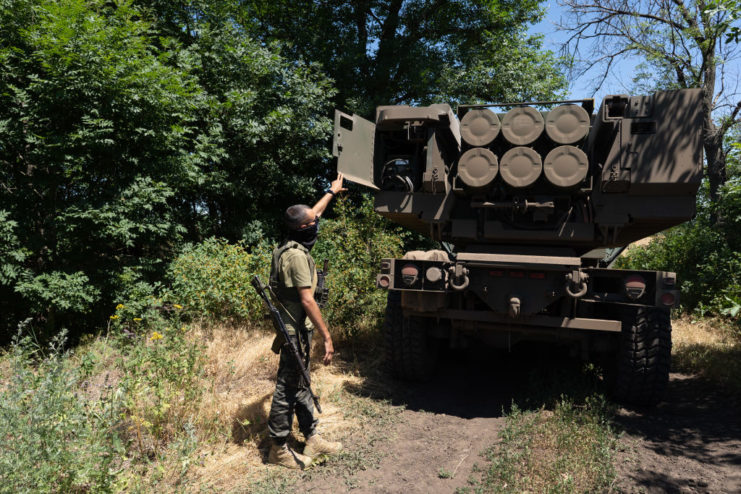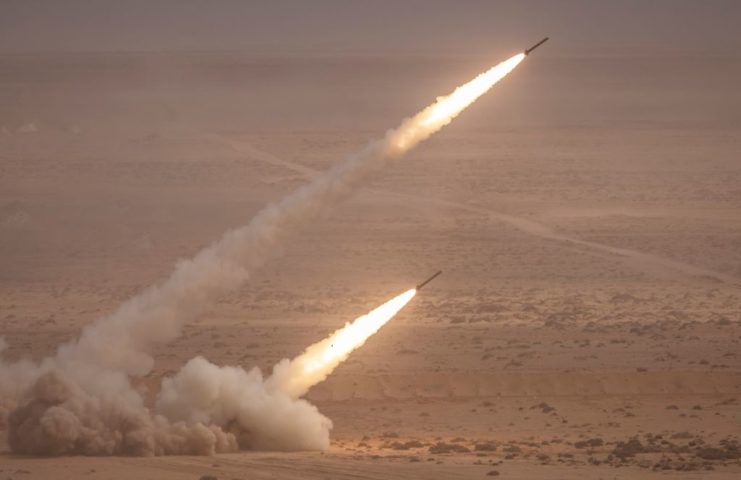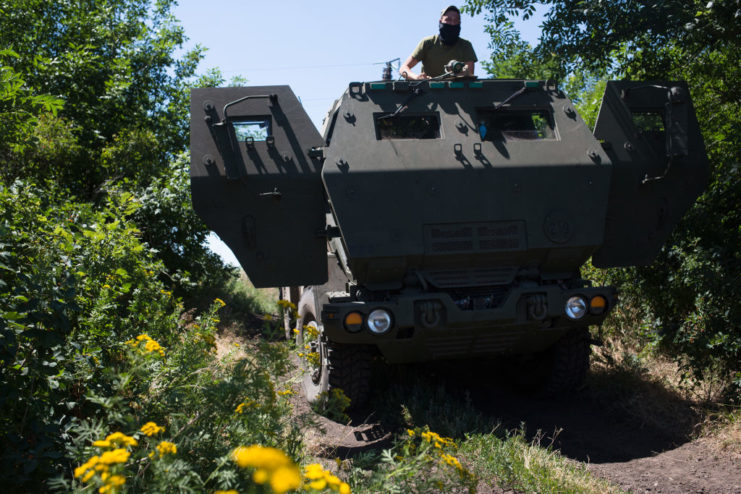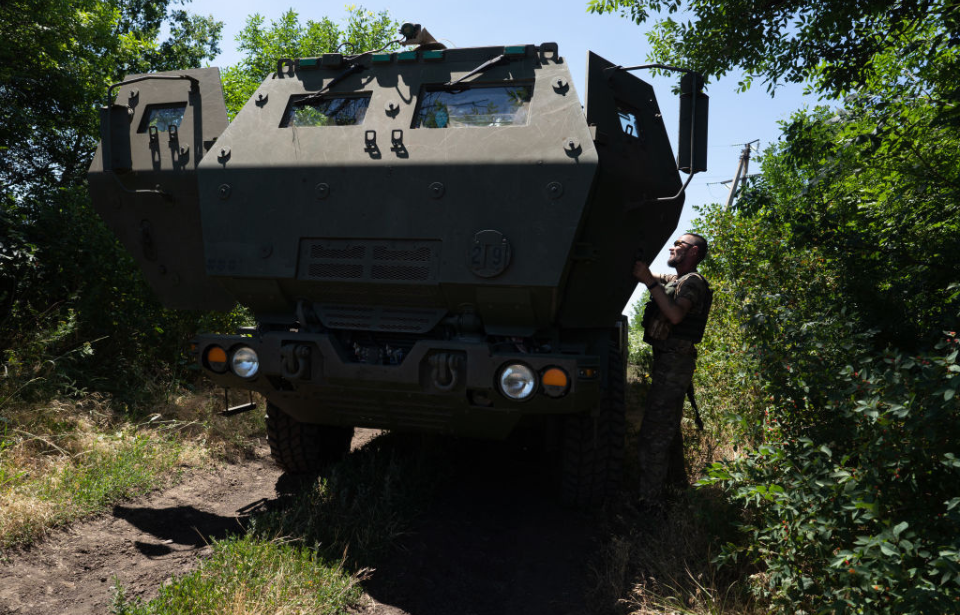Since receiving its delivery of 16 US-supplied M142 High Mobility Artillery Rocket Systems (HIMARS), the Ukrainian military has used them against Russian-held sites and equipment. The Russian forces know how powerful the artillery systems are and have made a concerted effort to impede their use.
Recently, the Ministry of Defence of the Russian Federation held a press briefing, during which spokesperson Igor Konashenkov stood in front of a map, which featured the words “44 HIMARS” written in Russian. This has led many to claim that the country is trying to spread propaganda over its effectiveness, as that’s over double the artillery systems Ukraine has access to, while others are calling out news outlets for misreporting the phrase’s meaning.

Since receiving its delivery of the M142 HIMARS, the Ukrainian military has repeatedly used the systems to hit bridges across the Dnieper river, which separates the Russian-controlled region to the south from the Russian-occupied city of Kherson.
Reports that the Russians claimed to have destroyed 44 HIMARS first appeared on Twitter and Telegram, with large accounts like @Flash_news_au and @nexta_tv posting screenshots from the Ministry of Defence’s press conference. The BBC‘s Ukrainian-language Twitter account also drew attention to the map behind Konashenkov. The news outlet did, however, suggest that the phrase referred to the destruction of HIMARS missiles, as opposed to the systems themselves.
“Perhaps the Ministry of Defence meant that it had intercepted 44 missiles launched from HIMARS,” the BBC wrote. “Such information appeared in the Russian report on 30 August [2022]. But in this case, the inscription on the map from today’s summary is not correct, since it clearly follows from it that we are talking about missile systems, and not about individual missiles.”
⚡️The Ministry of Defense of the Russian Federation has announced today at a briefing the destruction of 44 HIMARS out of 20 that are in service in Ukraine, – according to open sources. pic.twitter.com/GbY39eY7gl
— FLASH (@Flash_news_ua) September 1, 2022
During the press briefing, Konashenkov said, “In the areas of the city of Kherson, Novaya, Kakhovka, Khersion region, Antonovsky bridge and Kakhovskaya hydroelectric power station, three Ukrainian Tochka-U ballistic missiles were intercepted in the air, as well as 53 projectiles of multiple launch rocket systems (MLRS). Including 44 – HIMARS, five ‘Alder’ and four ‘Hurricane.'”
The Alder Tree, formally known as the Vilkha missile launcher, was developed by Ukraine. Based on the BM-30 Smerch, it fires guided missiles. The BM-27 Uragan, more commonly referred to as the Hurricane, is a Soviet-developed self-propelled rocket launcher dating back to the 1970s. Both have been used extensively by the Ukrainian military throughout the Russo-Ukrainian War.

The M142 HIMARS is a light-weight rocket launcher mounted to an XM1140A1 chassis. It can be equipped with either six 227 mm artillery rockets, which lock onto targets through the use of infrared sensors and GPS, or one MGM-140 Army Tactical Missile System (ATACMS) missile.
The United States was the first country to equip its forces with the HIMARS, introducing it to the Army in 2005. It has since been expanded to the Army National Guard and the US Marine Corps, with Romania, Jordan, the United Arab Emirates (UAE) and Singapore also equipping their armed forces with the artillery system.

The Washington Post recently reported that the Ukrainians have been creating dummy M142 HIMARS out of wood, in an attempt to deceive the Russian forces. Their efforts appear to be working, with the report stating that at least 10 Russian 3M-54 Kalibr cruise missiles have hit the decoys.
More from us: Russian Soldiers Are Shooting Themselves In the Legs to Get Out of Ukraine
Due to the success of the dummy HIMARS, more are currently being produced. According to a senior Ukrainian official, the fake artillery systems are indistinguishable from the real ones through the lens of Russian drones. When they identify the replicas, they send a signal back to the naval cruise-missile carriers stationed in the Back Sea, which then fire their projectiles.
